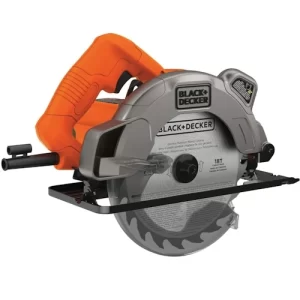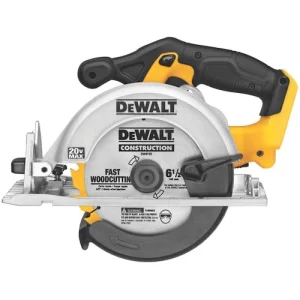Subtotal: ₹9,704.00
Circular Saws
-
Bosch GDC 120 Corded Electric Circular Saw, Diamond Tile / Marble Cutter, 1,200W, 12,000 rpm
Surface Recommendation Wood Power Source Corded Electric Special Feature Ergonomic Included Components Tool ₹3,963.00 -
BLACK+DECKER CS1500 1500W 7”/185mm Corded Electric Wood Cutting Circular Saw
Blade Material High Speed Steel Surface Recommendation Wood Power Source Corded Electric ₹5,243.00 -
DEWALT 20V MAX Circular Saw, 6-1/2-Inch Blade, 460 MWO Engine
Blade Material High Speed Steel Surface Recommendation Wood Power Source Battery Powered ₹8,665.00
Circular Saws: A Comprehensive Guide to Types, Benefits, and Selection Criteria
Introduction to Circular Saws
Circular saws are among the most versatile and essential power tools in woodworking, construction, and metalworking industries. These powerful tools utilize a toothed or abrasive disc to cut various materials, including wood, metal, plastic, and masonry. Due to their precision, efficiency, and ease of use, circular saws are indispensable for both professionals and DIY enthusiasts.
This guide will explore different types of circular saws, their benefits, key factors to consider when purchasing, and essential maintenance tips for long-term performance.
Types of Circular Saws
1. Handheld Circular Saws
These are portable and commonly used for cutting wood, metal, and plastics.
- Sidewinder Circular Saws: Lightweight and efficient, with the motor placed next to the blade.
- Worm Drive Circular Saws: Feature a motor positioned behind the blade, providing more torque for heavy-duty cutting.
- Cordless Circular Saws: Battery-operated and ideal for job sites without power access.
- Mini Circular Saws: Compact and suitable for precision cuts in small projects.
2. Table-Mounted Circular Saws
These saws are fixed onto a table, offering enhanced stability and accuracy.
- Table Saws: Common in woodworking shops for ripping large sheets of wood.
- Panel Saws: Used in industrial settings for cutting large panels with precision.
- Radial Arm Saws: Versatile saws that allow cross-cutting, ripping, and bevel cutting.
3. Specialized Circular Saws
These saws cater to specific cutting requirements.
- Track Saws: Designed for straight, guided cuts with minimal splintering.
- Abrasive Saws: Used for cutting metal and concrete with an abrasive disc instead of a toothed blade.
- Concrete Circular Saws: Feature diamond blades for cutting through masonry and concrete.
- Metal Cutting Circular Saws: Designed with carbide-tipped blades for cutting steel and aluminum.
Benefits of Circular Saws
1. Precision and Accuracy
Circular saws offer clean and accurate cuts with adjustable depth and angle settings.
2. High-Speed Cutting Performance
Equipped with powerful motors, circular saws ensure quick and efficient cutting.
3. Versatility in Applications
From woodworking to metal cutting, circular saws handle various materials.
4. Portability and Ease of Use
Many circular saws are lightweight and easy to maneuver on job sites.
5. Durability and Longevity
Made from high-quality materials, these saws offer long-term reliability with proper maintenance.
6. Cost-Effective Cutting Solution
Compared to other saws, circular saws provide excellent value for money.
Factors to Consider When Buying a Circular Saw
1. Blade Size and Type
Choose the appropriate blade diameter and material based on cutting needs.
2. Motor Power and Speed
Opt for higher RPM and horsepower for heavy-duty applications.
3. Corded vs. Cordless
Corded models provide unlimited power, while cordless ones offer mobility.
4. Bevel and Depth Adjustment
Look for saws with easy angle and depth adjustment features.
5. Safety Features
Ensure the saw has blade guards, electric brakes, and anti-kickback mechanisms.
6. Ergonomics and Comfort
Choose a saw with a comfortable grip and balanced weight for better control.
Maintenance Tips for Circular Saws
1. Regular Blade Cleaning and Sharpening
Keep blades sharp for clean cuts and efficient performance.
2. Lubricate Moving Parts
Prevent wear and tear by applying appropriate lubricants.
3. Inspect Electrical Components
Check cords, batteries, and switches for any signs of damage.
4. Dust and Debris Removal
Clean sawdust buildup to maintain smooth operation.
5. Store Properly
Keep the saw in a dry place to prevent rust and damage.
Conclusion
Circular saws are essential tools for a wide range of cutting applications. Understanding their types, benefits, and maintenance requirements helps users select the best model for their needs, ensuring precision, efficiency, and durability in every project.





